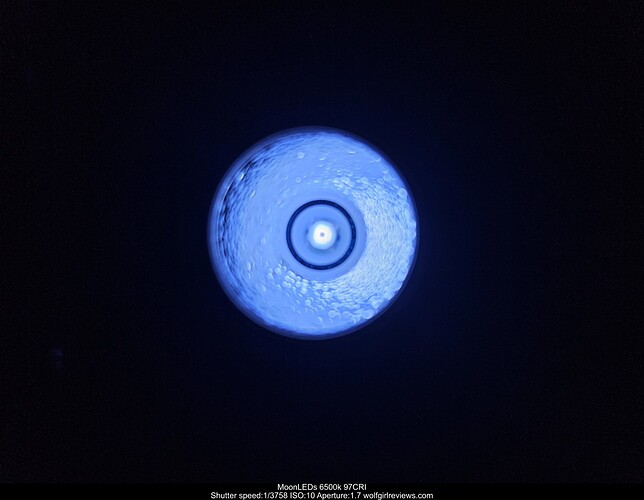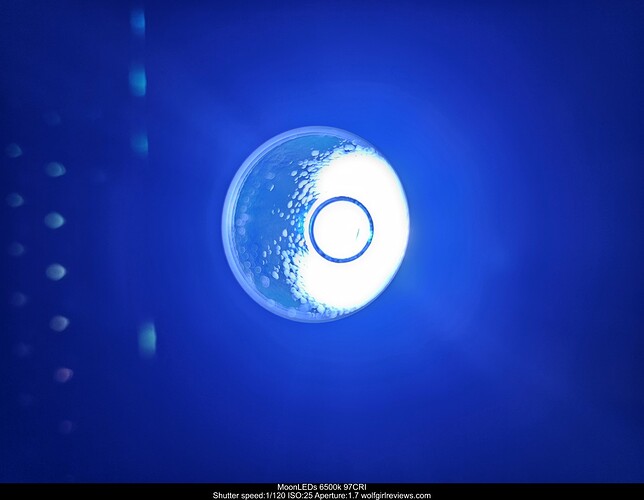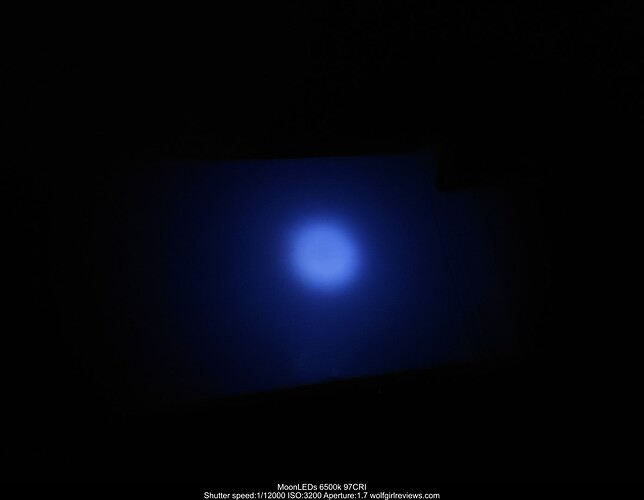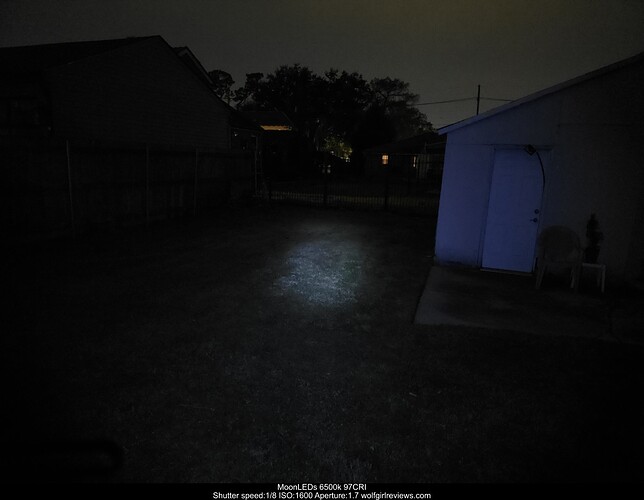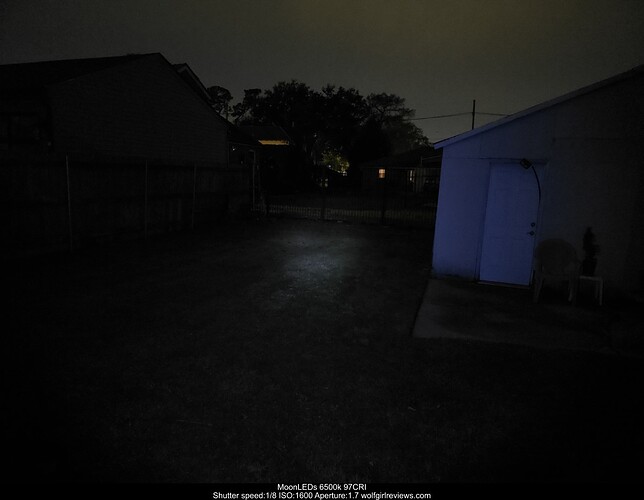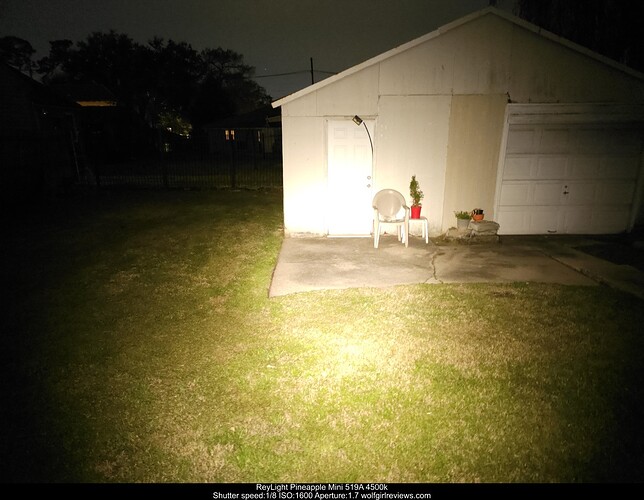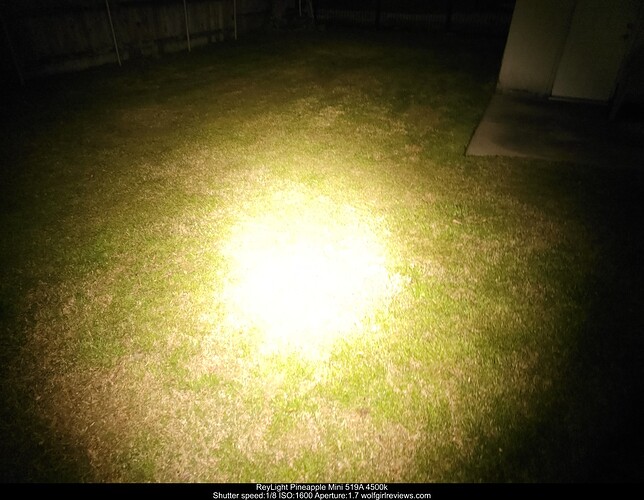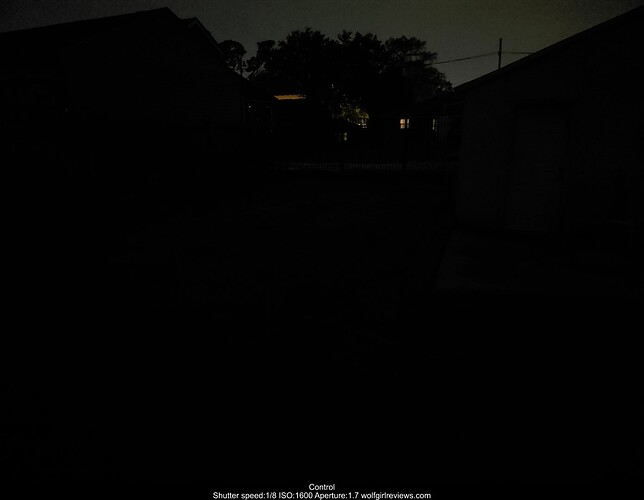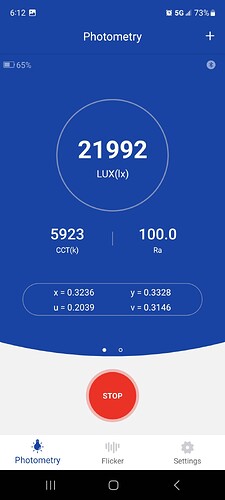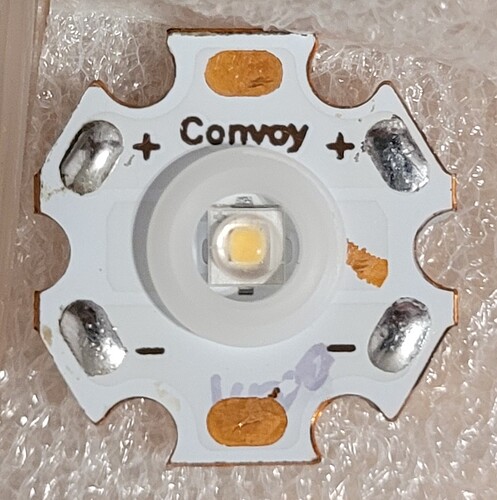on Turbo that’s a side affect of the high thermal resistance and that the LED is driven really hard. It’s having trouble transferring the heat being generated. Probably not the best LEDs to direct drive.
Am I the only one that wants to see beam shots comparison?
Thanks–I’m aware that the Opple readings are crude approximations. I still think that it’s reasonable to assume that higher Opple readings are generally correlated with higher actual CRI values.
High CRI LEDs don’t handle high drive current well, too much blue leaks through and ruins the tint and CRI.
You are not! Hopefully some are on their way to koef3 for some spectral readings.
Thank you so much for sending samples to both reviewers! This should give us a lot of good info on the variance of both the emitters and the measuring equipment.
Sorry for the delay, had a lot going on. Put together an S21A with the LED, here are some readings and beamshots.
My spectrometer didn’t know what to make of this LED… it’s supposed to be 6500k, but this was the reading…
Measured 23 lm on my tube. Driver is a Convoy 5x7135 driver with 2 of the 7135s removed, resulting in ~1.1A.
Beamshots:
Reference for camera settings using Pineapple Mini with 519A 4500k:
Very strange emitter overall, but definitely beautiful. Kind of want to get some more to put in a DT8 or something else with a lot of LEDs…
I don’t know what’s going on there.
Mine was under 6000K and the most beautiful tint I’ve ever seen!
Thank you so much for posting your analysis–that is incredibly strange!! There does appear to be a dead spot in the center of the LED, from your first bare-emitter photo and from some of the outdoor beamshots showing a hole in the beam. I would guess that this was a sample with defective or damaged phosphor that isn’t capable of fully converting the blue emission down to longer wavelengths.
The led is broken. The dark spot in the LES is also clear sign that this LED was exposed to extreme internal heat.
Maybe due to reflow, maybe due to high current. The spectrometer reading is not right (and makes no sense at all with 185000 K CCT which makes not even sense with this blue color, should be around 30k to 60k)
The bluish color is clear sign of massive overheating, despite the low current. Maybe the led tested is one with internal defect or very high thermal resistance, don’t know.
My emitters does not show any of this strange behavior. Can you test another one and turn up the current slowly? (On adjustable lab power supply)
I guess most likely I was just unlucky and got a defective one. Looking at the spot in the middle and the corresponding hole, it does seem uneven.
I feel tempted to get some more of these myself to test now, if nothing else then I like the light from it enough it’d be interesting to have in a triple or quad if I get more defective ones… I checked everything putting the light together but it also seemed the same when I used a low current SMD tester to verify polarity and function before soldering the leads, I guess not knowing what to expect from it.
CRI probably isn’t 97 but still doesn’t seem awful, ironically.
An adjustable power supply is a must-have for testing LEDs. Also a proper setup for measuring spectra and flux.
A reflow hotplate (or soldering iron with flat tip and much experience) is also necessary, and the reflow temperature diagram stated in datasheet which has to be followed as good as possible.
These Moonleds emitters are extremely sensitive to heat and overcurrent.
I built a triple with the 6000 K ones and had no defect. Also two 5000 ones are perfectly fine. I never got any defect.
I reflowed the Emitter onto a used 20mm MCPCB before sending it to Wolfgirl.
I didn’t have any issues with the reflow.
This one was a dud I guess, Sorry about that @wolfgirl42
Then it could be still massive overcurrenting. The dark spot in the middle of the LES is a very clear sign for this. The dark spot emerges if the LES gots too high, the phosphor is burned away.
Since I had three runs with this LED I never experienced any problems until I cranked up the current above max safe levels for more than few seconds (around 1.8 to 2 A). And the obviously wrong values from spectrometer (185000 K) even for the blue tint in the pics are also a problem.
Is the LED in the pic the sample for wolfgirl? If so, I cannot see any defect or other strange things on this sample. (Aside from scratching on MCPCB ![]() )
)
Yes, that is the LED I sent Wolfgirl.
I removed the Nichia 219B 4500K from that MCPCB a while back for a different light and it was the only 20mm 3535 MCPCB I had.
The scratch on the MCPCB was there already.
Thanks for the information.
Have you tested the LED after reflow with a low current (max. 350 mA)?
I don’t have a power supply but I check functionally and the connections with a Fluke 287 Diode Test.
There was no dark spot? (There is no spot visible so I don’t think this defect was present while you are reflowing the LED)
I am pretty sure this LED was fried due to massive overcurrent. 1.1 Amp driver is fine, but since I even push the LEDs in my triple with more than 1.2 A (total around 3.6 Amp or so) they are able to withstand more than that.
That makes sense, although I’m not sure how it happened - there is a sort of ring around the middle of the emitter where the phosphor looks like it is damaged in some way, and when the LED is on, there is no light being emitted from the middle spot at all. I wonder if the phosphor separated somehow, perhaps due to an impact during shipping or something, although I’m not sure exactly how it could have happened as it was definitely packed well. I don’t think I heated the board excessively when I connected the driver, I didn’t bring the iron into contact with the pad for more than about half a second.
Whatever happened, I might put in an order for some more and put another one together, I definitely want to get the data after this disappointment, feeling a bit bad as so far every light I’ve put together except this one was successful.
Do you have experience in handling bare LEDs with appropriate equipment?


